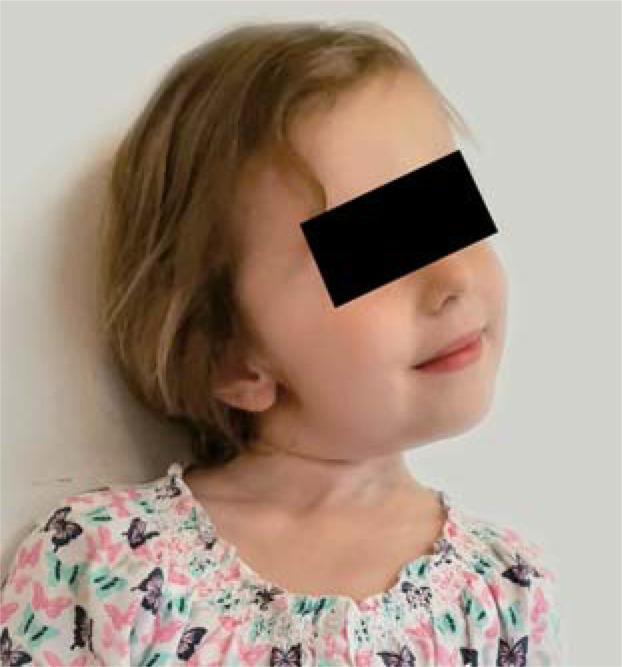A 5-year-old girl underwent parotidectomy for cystic, atypical mycobacterial infection (Mycobacterium malmoense). On postoperative day 2, the otherwise healthy girl developed—despite orthotic treatment—progressive torticollis, for which she was seen for treatment. It was possible to achieve a clinical improvement in the passive and active lateral inclination of the head, not, however, in the anomalous rotation. An electrophysiological investigation was normal. On the basis of a suspicious magnetic resonance imaging scan performed at another institution showing cervical spinal cord swelling, computed tomography with 3D reconstruction was performed, revealing atlantoaxial subluxation. The combination of findings enabled the diagnosis of Grisel syndrome to be made. The successful treatment in this case was performed as appropriate to type (type 3 according to Fielding and Hawkins), comprising several weeks of halo traction followed by a halo vest. Based on antibiogram results, concomitant triple therapy was performed to treat the atypical mycobacterial infection. The rare entity of atraumatic atlantoaxial subluxation typically affects children following respiratory infection or ear, nose, or throat surgery. Other associations with hereditary disorders, chromosome aberrations (trisomy 21), and autoimmune diseases have been described. Self-limiting cases, as well as cases requiring surgery, are known. This is an important differential diagnosis in the case of unexplained torticollis.
Translated from the original German by Christine Rye.
Cite this as: Schwarze M, Hemmer S, Akbar M: Atraumatic atlantoaxial subluxation—Grisel syndrome.
Figure 1.
Footnotes
Conflict of interest statement:
The authors declare that no conflict of interest exists.



